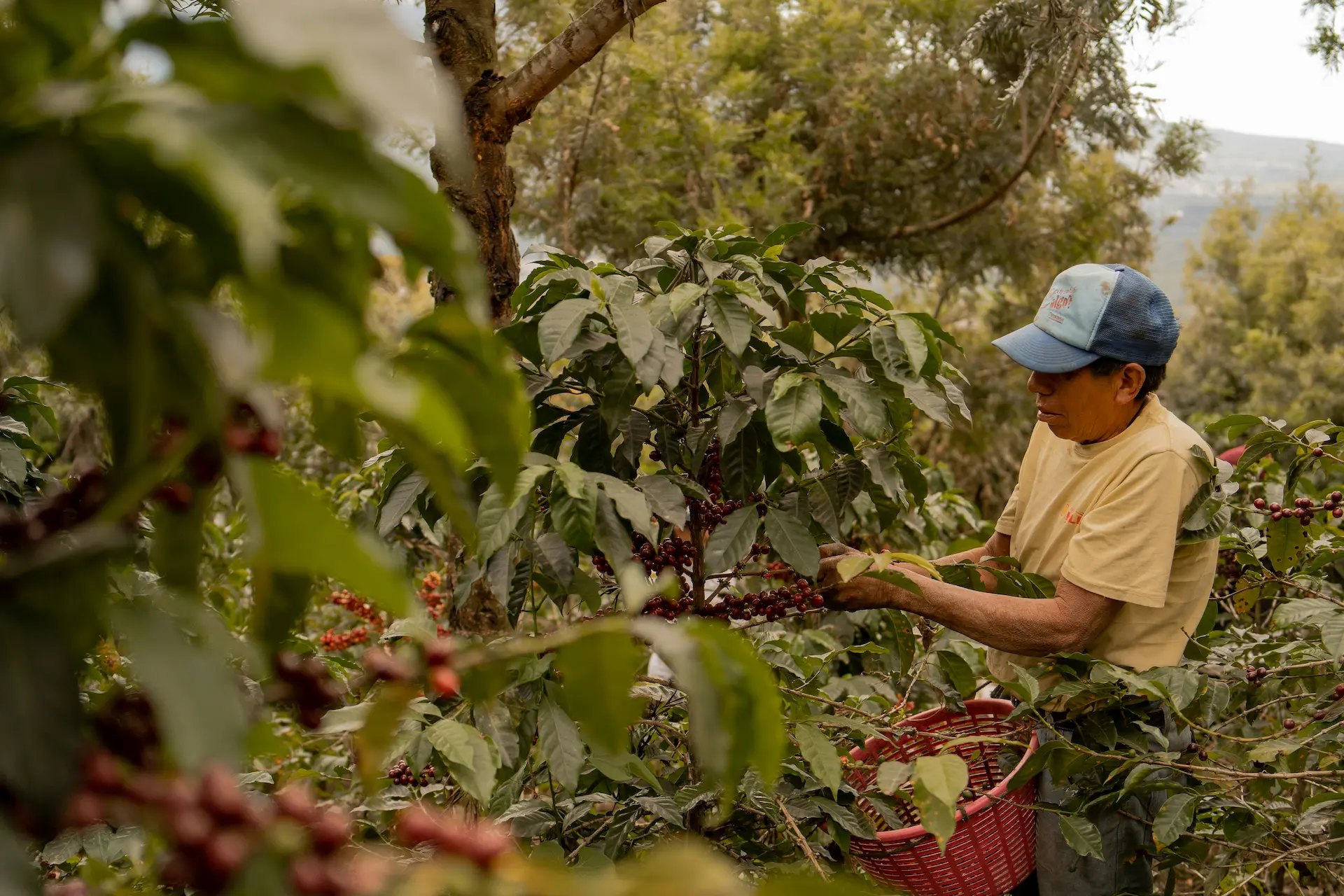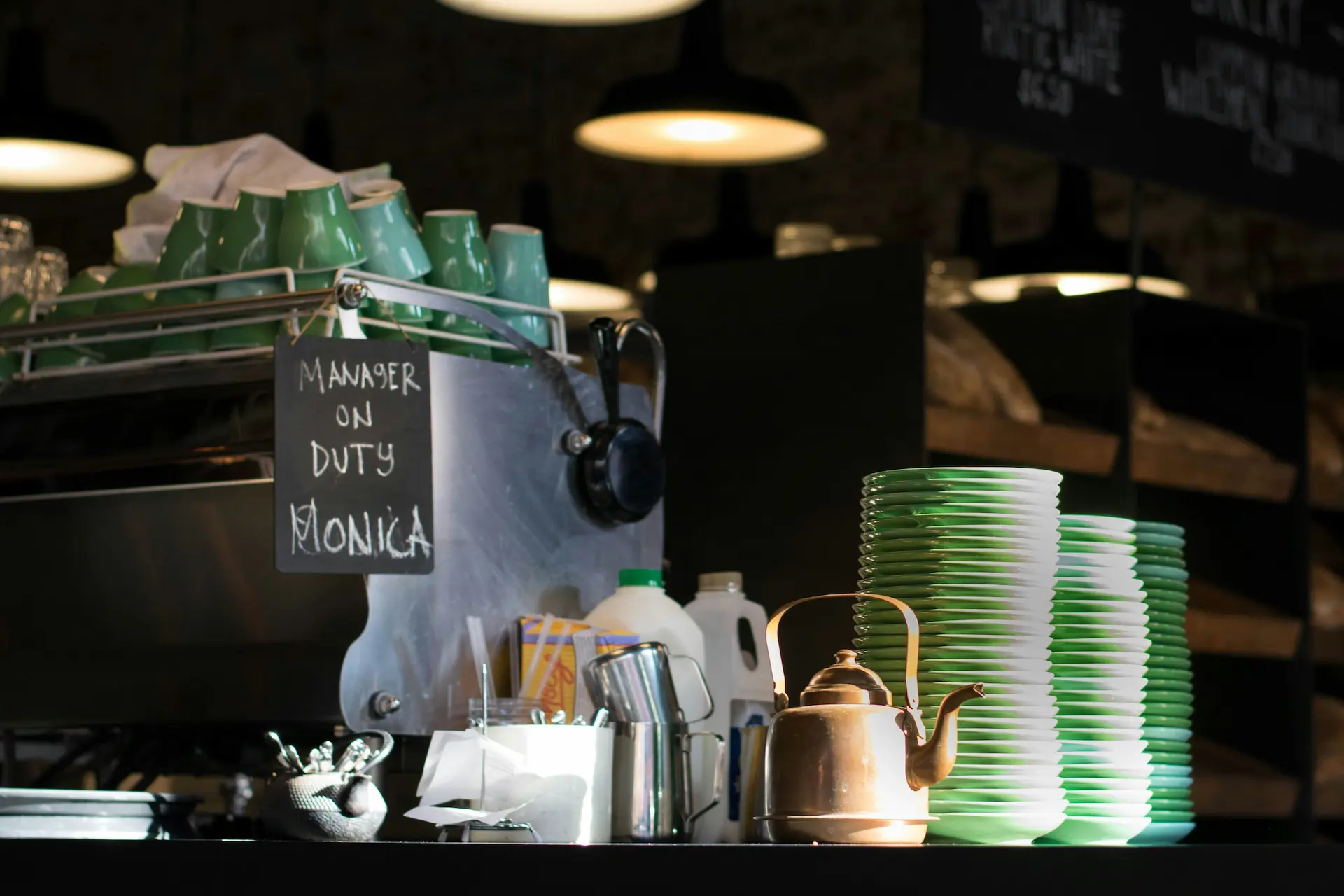The passion for coffee flows through Hedgehog’s veins. It all started when founder Saro Campisano began his entrepreneurial journey with fairtrade coffee. On the slopes of the Himalayas in Nepal, he bought his first beans directly from small-scale farmers, subsequently bringing this special coffee to the Netherlands via a fair supply chain.
Today, Hedgehog no longer uses that knowledge to sell coffee, but to make the sector more sustainable. We have a proven track record in calculating the environmental impact throughout the entire chain; from bean to machine. In this article, we take you through the challenges of the sector and the solutions we offer.
Coffee in times of climate crisis
The need for insight is greater than ever. The coffee plant is extremely sensitive to weather conditions, and climate change affects production directly. Harvests fail more often, and the suitable agricultural area has already decreased drastically. You can see this immediately reflected in prices; for instance, the price of Arabica beans rose by a staggering 60% last year. But sustainability also plays a leading role further down the chain. Coffee machines are full of metals and electronics; raw materials that are becoming increasingly scarce due to geopolitical tensions and shortages.
In addition, the European Union is increasingly leaving its mark on the industry with strict rules regarding material use, energy efficiency, and repairability. Sustainability is no longer a choice in the coffee sector, but a prerequisite for a future-proof business. Learn more about how climate change affects the global coffee harvest in an extensive article on this theme.

Hedgehog and the coffee chain
To know where to start reducing your impact, you first need to know what your impact is. Hedgehog calculates this via a Life Cycle Assessment (LCA), based on official ISO standards (ISO 14040 and ISO 14044). We take a holistic approach. We don't just look at the final product, but at the entire chain: from the extraction of raw materials and transport to energy consumption during use and final waste processing. We combine all this data into a clear picture of the impact on various categories such as climate change (CO₂), water use, and toxicity.
With these insights, companies can develop a concrete sustainability strategy that really makes a difference. Moreover, it offers hard data to communicate transparently to customers and partners.
You can read an example LCA about the climate impact of tea and coffee here.
From bean to machine: Hedgehog in practice
In recent years, Hedgehog has helped various players in the coffee industry to get a grip on their impact. A selection of our collaborations:
1. The footprint of festival coffee (Barista Company)
Barista Company provides catering at events throughout Western Europe with mobile coffee trucks. They wanted to know exactly what the environmental impact is of one served cup of coffee. Hedgehog mapped out all emissions (Scope 1, 2, and 3). The results were an eye-opener: almost half (47%) of the total emissions in 2022 were accounted for by cow's milk.
- The insight: Thanks to data, Barista Company now knows that the biggest environmental gain is not in transport, but in ingredients.
- The action: If Barista Company replaces half of the cow's milk with oat milk, total emissions will immediately drop by 12%.
2. Coffee as a service (CoffeeClick)
For CoffeeClick, we analyzed a circular business model. They do not sell machines but offer coffee as a service ('as-a-service'). They remain the owners of the equipment, which encourages repair and reuse. Together with Route Circulair, Hedgehog calculated the full impact of this model; from the coffee bean and packaging to years of maintenance and leasing. This gave CoffeeClick the tools to further reduce their raw material consumption and to prove to customers in black and white how sustainable their cup of coffee really is.
3. The impact of the machine (Bravilor Bonamat & CREM)
How sustainable is the hardware? For manufacturers Bravilor Bonamat and CREM, we conducted extensive cradle-to-grave analyses. From instant coffee machines for hotels to high-end espresso machines. The goal: to understand which parts in the life cycle cause the most 'damage'. These results are now being used directly for the development of more economical machines and for transparent communication of environmental data to their customers.
4. From waste to raw material (Caffe Inc.)
Caffe Inc. does something special: they upcycle coffee grounds – normally waste – into valuable coffee oil for the food and cosmetics industry. Hedgehog took on the challenge of drawing up an LCA for this innovative process. We calculated the emissions of 1 kg of upcycled coffee oil, from collecting the 'grounds' to the moment the oil leaves the factory. With these insights, Caffe Inc. is now working on a strategy to reduce their production emissions by as much as 80%, by focusing on energy efficiency and minimizing residual flows. You can read an extensive report on this project here.

Together towards the future
That the sector is in motion was evident during Host Milano in October 2025, the largest international coffee fair. Our co-founder Saro was invited here to speak about the indispensable value of LCAs in the modern coffee industry.
"By measuring climate impact, you help companies innovate, remain competitive, and communicate with confidence about their sustainability goals." – Saro Campisano
It is encouraging to see that the coffee sector – from farmer to barista – feels the need to change. Sustainability is no longer a trend, but a lifeline for the industry to become more resilient to extreme weather and changing markets. More and more companies are turning ambition into action, driven by data. Hedgehog looks forward to continuing to play an important role in this. If you want to know more about how an LCA is put together and what the steps are, check out this handy LCA guide specially applied to the coffee sector.







